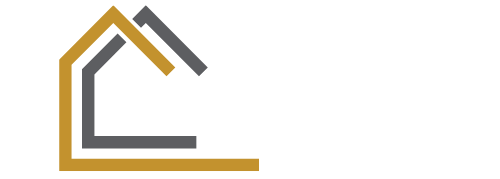Moving can feel like a chaotic circus act—one minute you’re juggling boxes, and the next, you’re trying to remember if you packed the toaster. But what if tracking your moving progress could be as easy as pie? With the right tools and tips, you can transform that whirlwind of activity into a well-orchestrated ballet.
Table of Contents
ToggleUnderstanding Track Moving Progress
Tracking moving progress prevents delays and enhances organization throughout the moving process. Effective tracking systems offer clarity and reduce chaos.
Importance of Tracking Moving Progress
Tracking moving progress ensures that tasks are completed on time. Clear visibility into each step fosters accountability among team members. A structured approach to tracking minimizes the chance of overlooking important tasks. Regular updates help to identify potential bottlenecks early, allowing for prompt resolutions. By maintaining a focus on essentials, a smooth transition from one location to another becomes achievable.
Common Methods for Tracking Progress
Common methods for tracking progress during a move include to-do lists, mobile apps, and spreadsheets. To-do lists provide a straightforward way to visualize tasks at hand. Mobile apps offer real-time updates and notifications, enhancing communication among those involved. Spreadsheets allow for detailed tracking of expenses, timelines, and completed tasks. Integrating multiple methods often yields the best results, offering flexibility and adaptability during the moving process. Utilizing a combination fosters an organized approach to managing various moving stages effectively.
Tools and Technologies for Tracking
Tracking moving progress requires effective tools and technologies. Various resources enhance organization and communication throughout the moving process.
Mobile Apps for Moving Progress
Mobile apps greatly simplify tracking moving progress. Features such as to-do lists and inventory checklists allow users to manage tasks efficiently. Notable examples of these apps include Move Plan and TaskRabbit, which enable users to create schedules and coordinate with helpers. Notifications keep everyone informed about upcoming tasks and deadlines. Syncing these applications across devices ensures that all team members stay in the loop. Utilizing mobile apps not only streamlines the moving process but also increases accountability among participants.
GPS and Location Services
GPS and location services play a crucial role in tracking moving progress. Real-time tracking apps provide accurate updates on the location of moving trucks or shipments. Tools like Google Maps and Waze offer live traffic conditions, helping avoid delays. Location services promote efficiency by allowing users to estimate arrival times and plan accordingly. Utilizing these technologies reduces uncertainty and enhances communication between team members. By integrating GPS capabilities, moving teams can stay organized and reduce stress throughout the relocation process.
Best Practices for Effective Tracking
Tracking moving progress involves specific practices that enhance clarity and accountability. Implementing these best practices can help streamline the moving process.
Setting Realistic Goals
Setting achievable goals ensures every team member understands their responsibilities. Break down tasks into manageable steps to avoid feeling overwhelmed. Assign deadlines for each task to maintain momentum. Prioritize critical items such as packing high-demand items first. This approach keeps the project on track and allows flexibility for adjustments along the way. Regularly evaluate progress against these goals to identify areas needing attention.
Regular Check-Ins During the Move
Conducting regular check-ins fosters communication among team members. Schedule brief meetings to discuss completed tasks and clarify next steps. Utilize mobile apps to facilitate real-time updates on progress and any challenges encountered. Encourage team members to express concerns or operational issues during these check-ins. Addressing challenges promptly minimizes delays and ensures everyone remains aligned with overall objectives. Frequent communication creates a supportive environment, making the moving experience more efficient and less stressful.
Challenges in Tracking Moving Progress
Challenges arise during the moving process, often stemming from unforeseen delays and communication issues. Addressing these challenges proves essential for a successful relocation.
Dealing with Unforeseen Delays
Unforeseen delays often disrupt moving schedules. Common causes include traffic, weather issues, or last-minute changes. Tracking these delays requires proactive updates from all involved parties. By implementing a clear communication plan, teams can quickly adapt to unexpected changes. Adjusting timelines and responsibilities allows moves to stay on track despite setbacks. Utilizing mobile apps also helps provide real-time updates, allowing teams to coordinate efficiently.
Maintaining Communication with Movers
Maintaining clear communication with movers is vital for progress tracking. Regular check-ins ensure all parties are informed about important updates. Establishing a designated communication channel promotes transparency and quick resolutions to potential hiccups. Including all team members in conversations reinforces accountability and fosters collaboration. Documenting interactions within tracking apps also creates a reliable reference point. Effective communication minimizes misunderstandings and enhances overall efficiency during the moving process.
Tracking moving progress is essential for transforming a chaotic experience into a seamless transition. By implementing effective tools and best practices, individuals can maintain clarity and accountability throughout the process. Utilizing mobile apps and regular check-ins fosters communication and ensures everyone stays on the same page.
Addressing challenges like delays and unforeseen changes proactively can significantly enhance efficiency. A clear communication plan and documentation within tracking tools serve as invaluable resources for navigating the complexities of moving. Embracing these strategies not only reduces stress but also paves the way for a successful relocation.




